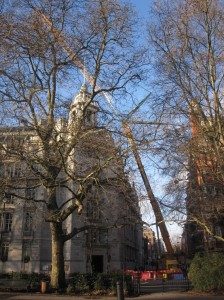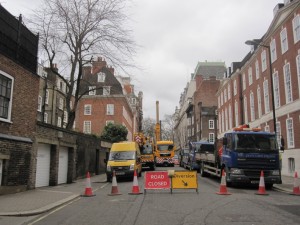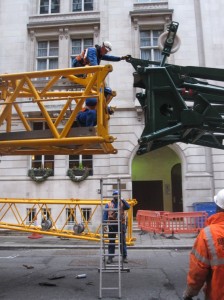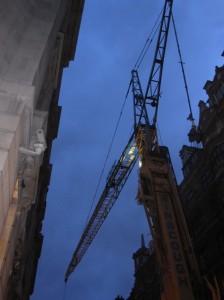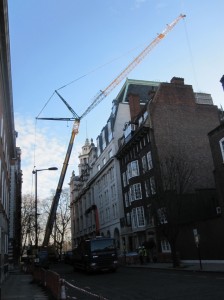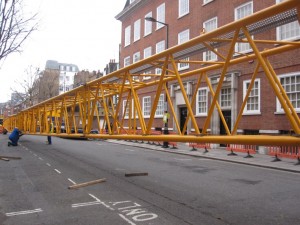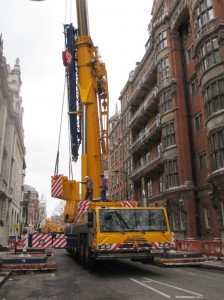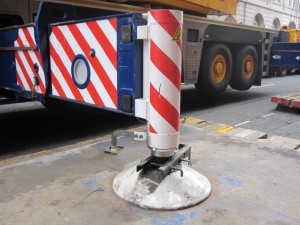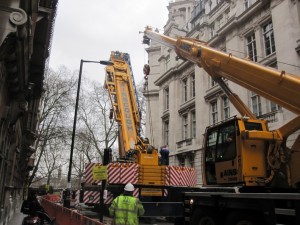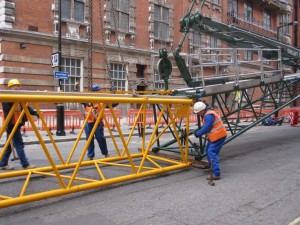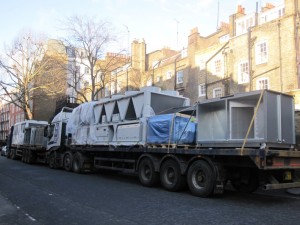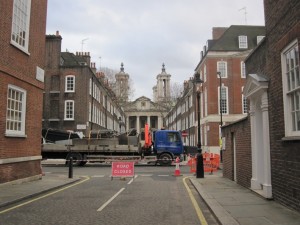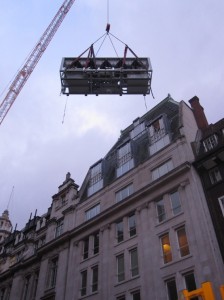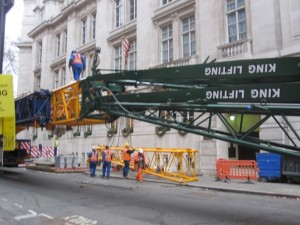Open Cities 31 Maintaining Cities Open
A lot has been written about cities and their ties with people. Lineu Castello’s ‘Rethinking the Meaning of Place’ (Ashgate 2010) is one of the most comprehensive literature reviews of how human beings interact with their built environment I have come across (more of that in a later post). He provides the big picture and long range history. On the other end of the kaleidoscope is the dynamic of everyday life in cities and the relentless transformations they are undergoing. At that level, many layers exist which mediate between people and how they use the city, influencing also their degree of openness.
The role of cranes
One such layer are the mobile cranes which are assembled and dismantled in record time to create, renew, maintain or replace building blocks of the city. Without them the city could not function properly. What has that to do with open cities? A lot, because openness does not just apply to open spaces but to the many other built places which provide the setting for urban livelihood, encounters and exchange at work, leisure and in homes.
The nature of cranes
Cranes have an ephemeral presence. They come and go, constituting a small cog in the immense complexity of urban change. They are an economic urban actor in their own right, relying on urban change for their economic well-being. They are resented as obstruction to ordinary city life, barring roads, generating traffic, dust and noise, slowing down life in buildings. Environmentalists may see them as a tool of waste, destruction, profligate use of materials. They can be perceived as contributions to innovative technology, but their technical prowess may be construed as facilitating short term gains for the real estate business with adverse long term consequences for sustainability. Their operations are risky and fraught with danger also for their operators.
Some may be fascinated by their sheer size, elegance of movement and logistic complexity. One thing is certain, they are here to stay and form part of the urban landscape and they remain one of the many dynamic ‘artefacts’ of the interchange between people and their city.
Renewal and inbuilt redundancy
Various parts of buildings have different life-spans. If walls can date back to the middle ages, most other parts are being replaced, improved and changed to suit new lifestyles and activities. Building services are the least durable part of the built fabric and this includes air conditioning. No doubt in the UK the EU will be blamed for new regulations to ban certain coolants which attack the ozone layer. However, in-built redundancy and restrictive practices prevent installations from changing coolant agents and need replacing in full. This can only be done by resorting to mobile cranes.
Here is not the place to discuss the wisdom of deep buildings with windowless workplaces; nor the pace at which buildings change hands, especially since commercial property has been increasingly securitised, meaning that fictitious parcels can form part of anybody’s investment portfolio without direct link to the building, its fabric or its use. Suffice to note that all the manifestations of capitalism in the built environment have physical, economic, environmental and social consequences.
Cranes in operation
Mobile cranes are of the essence to maintain and change a densely built up city. A crane with a sixty meter boom is necessary to replace the air conditioning system in a central London office building in a narrow street.
Moreover, replacement takes two phases to keep the building in working condition. Planning and logistics of such an operation, notwithstanding costs of £35,000 per weekend are phenomenal. Planning started in May for the following January and it takes at least twelve weeks to obtain consent for road closure. A large stretch is required to accommodate all the parts of the crane, a second rigging crane, the new air conditioning units, the skips and debris of the one being taken out.
Cellars and a wide variety of infrastructure installations under the road demand a broad distribution of the crane’s 180 t deadweight required to lift the bulky and heavy air conditioning parts.
A 55 t rigging crane assists the assembly of the crane, a precision job which takes between 5-7 hours and 25 skilled operatives to complete.
After that it is down to nature. Wind speed is limited to 15-17 m/h for these types of loads (9t) and bulks (8x3x3m). As this was exceeded on the day, the crane had to be taken down and the whole operation had to be repeated in the hope of better weather conditions.
Cranes and men
The construction sector is the unsung contributor to the wealth of cities which, in the western world at least, contributes to the cities’ openness. Even more in the shadow are the men (and it is men only) who work on mobile cranes and on whose team work the operation stands or falls. This process could be construed as a microcosm of the interaction between the material world linked to the city and human beings. The ‘gang’ comprised a wide age range, different ethnicities who operated like clockwork at a high level of precision. Openness between them and trust (another topic for another post) are of the essence to keep the city working and open for all.

